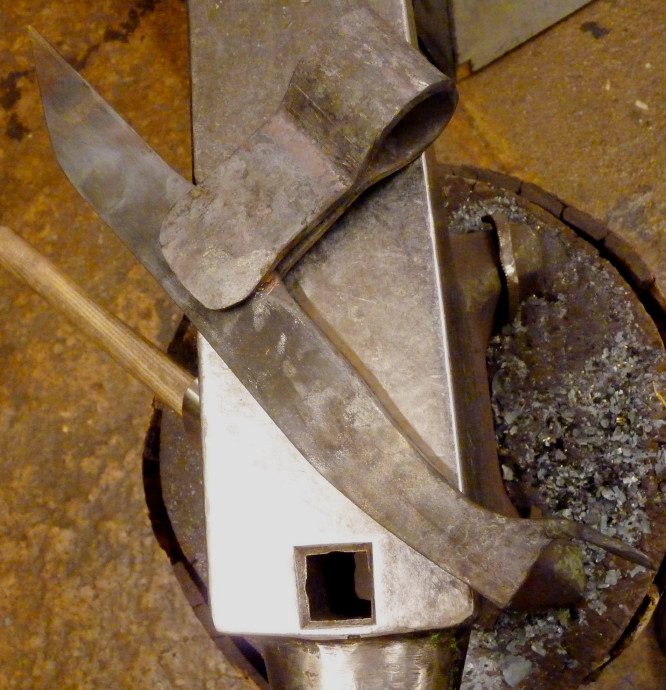Here's something a bit different from the previous stuff I've done.
Some time ago I visited the Lahti city historical museum after a long while and found out to my delight that their tiny armoury or gun room had been refurbished completely with all new displays and everything. There I noticed - for the first time - a small, crude, but somehow very cute "partakirves" ie. bardiche with part of the haft still remaining.
As far as I know, this axe and its design are unique, I haven't come across another like it anywhere. Of course, I'd be very interested to know if it has a sister or sisters somewhere...
Alas, most frustratingly, Lahti museum is one of those places where photographing is totally forbidden, so I got no photos of the original to show.
Luckily I had in my library an old booklet "Sotilaan aseista" (Of Weapons of Soldier) printed by Lahti museum in 1982 with text by Mr. M. Palokangas. In the booklet there was a small picture of the bardiche and some info about it: Russian-style bearded axe. An earth-find from Luumäki (Bone Hill(!)) catalogue number VHM E 2355-93. Dating: 16th-17th century.
The "VHM" indicated that it had been part of Viipuri city historical museum finds until the city was taken by the Russians (along with the surrounding Karjala isthmus in the end of WWII).
I wrote to Lahti museum and asked if they had more info about the bardiche, but they had none.
So here is my free-hand version of the bardiche; the dimensions are approximate and based on my memory. The weapon is crude to the extreme, with just a simple slightly curving blade forgewelded to a sandwiched socket. A colleague of mine suggested that the original could be some local blacksmiths' work with a broken off tip of a sabre fixed with a socket and then hafted. I'm not quite sure the story would be quite so simple, as the design is so elegantly functional and even eye-pleasing...
Anyway, with this one, 'krouvi' (crude, rough, large) is the word here, there is only that one forgeweld and rough shaping with hammer. Everything is coarse workmanship, filework and hammer marks all in plain sight.
The axe-head is forged from carbon steel and the haft is maple, that has been in my storage for the past fifteen years. The 'beard' will be fixed in place with a handforged nail when I attach the axehead to the haft permanently.
The length of the blade of the axe is 35 cm and overall length of the piece is 181 cm. The weight is few grams over two kilos, most of it coming from the maple haft.
In hand, this tiny bardiche feels surprisingly formidable, its reach is considerable and I for one would not like to be in the receiving end when it is swung or thrust in anger!
JT
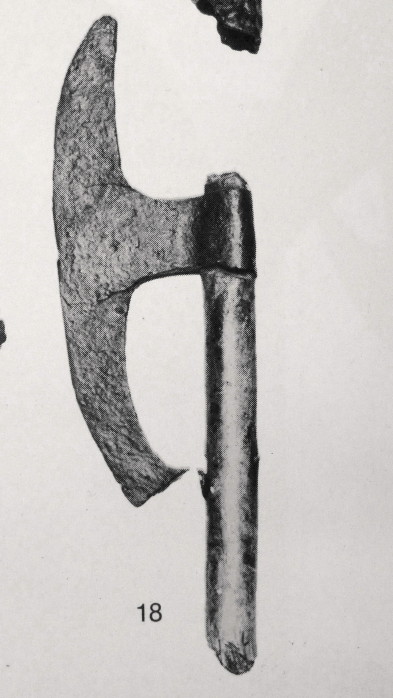
Picture of the original in Lahti museum booklet
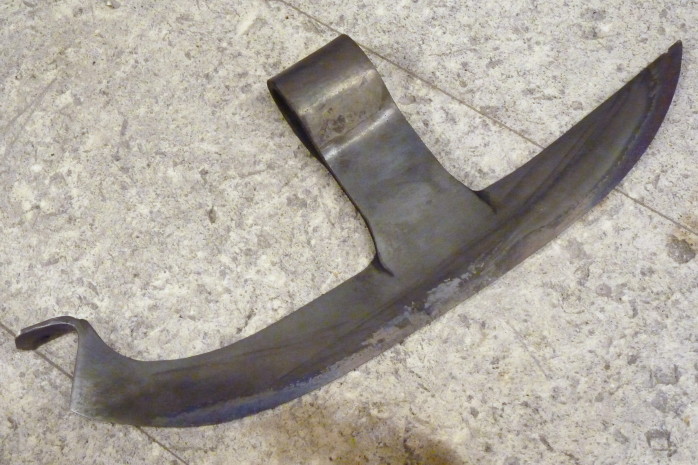
The bardiche heat-treated
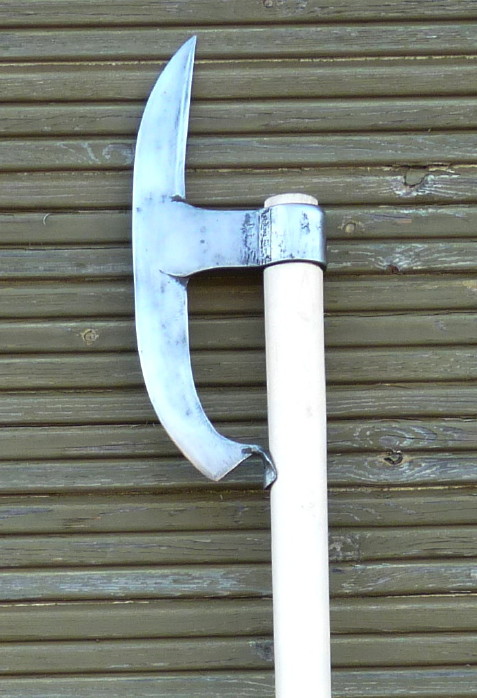
Haft in place, 'au naturel'
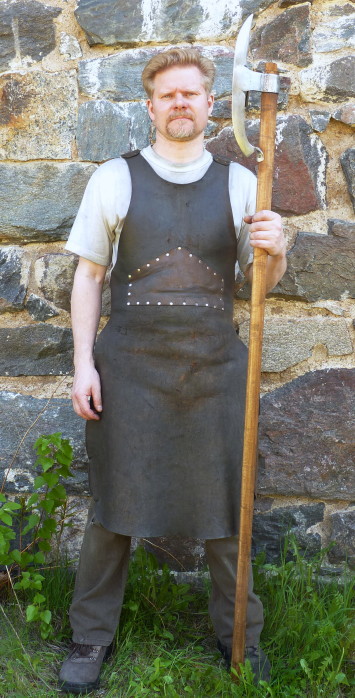
The bardiche with dyed haft, me as a size comparison
